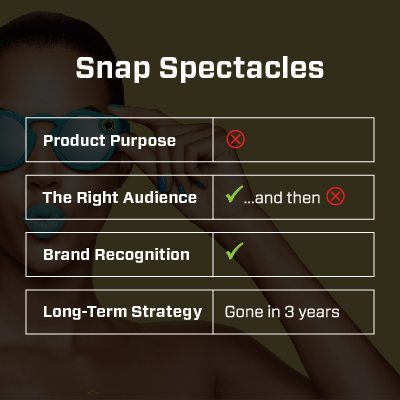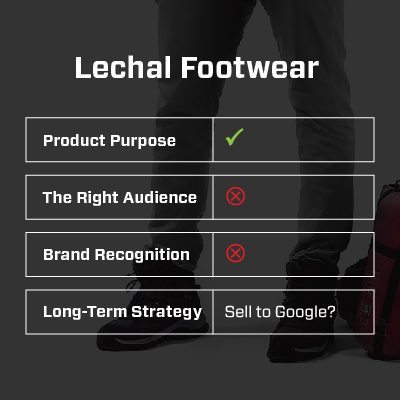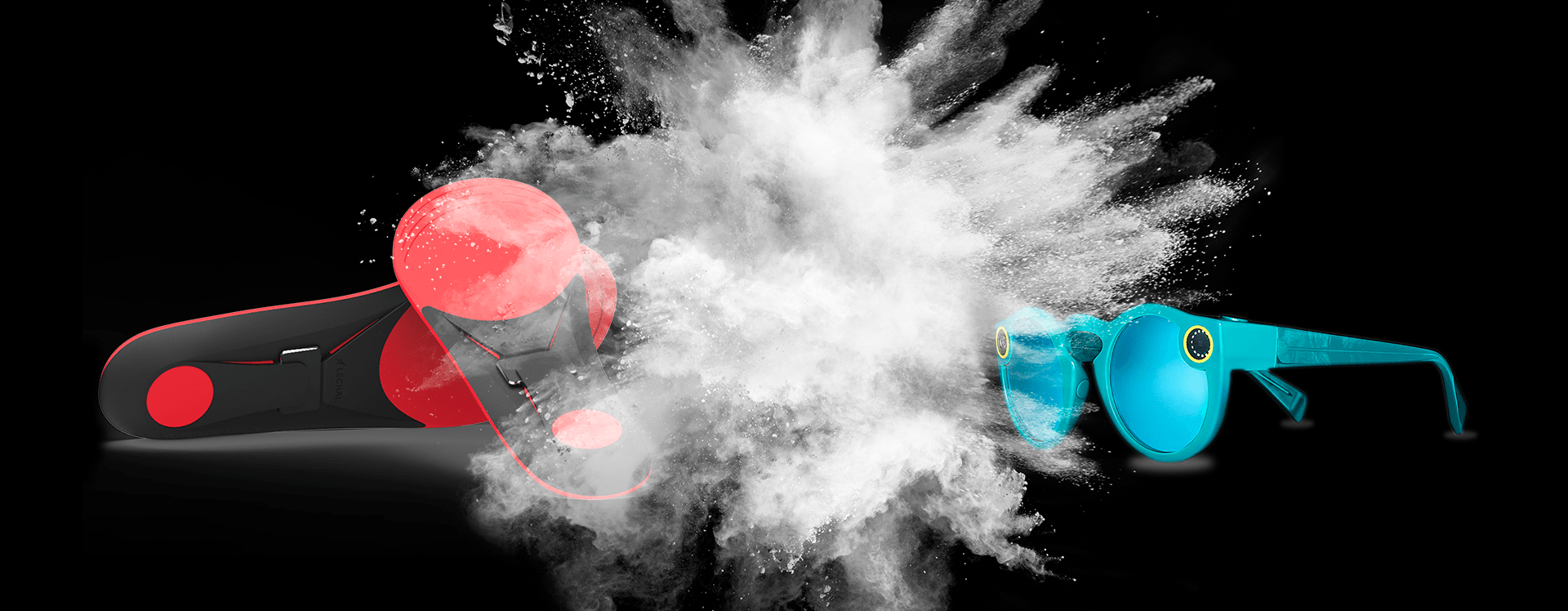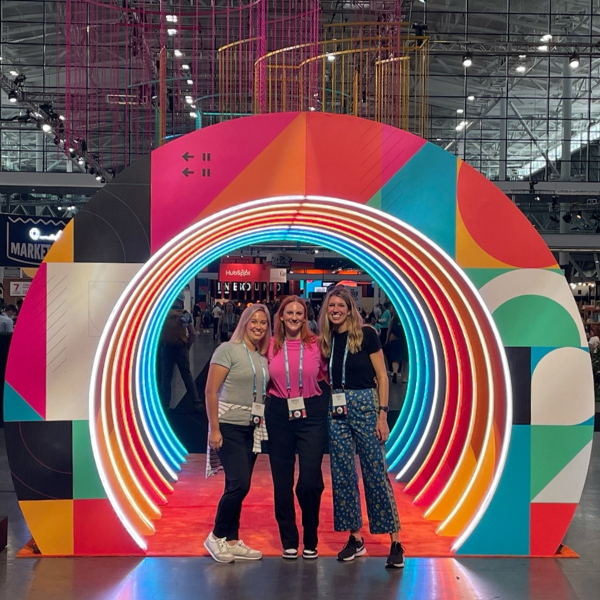By 2019, one in five U.S. adults will be wearing technology (eMarketer). But as adoption grows and brands race to connect with potential consumers, there are four success factors they must consider before developing their own wearable tech products. These factors represent a healthy balance of usability and hype: product purpose (what need does it fill?), target audience (who is it for?), brand recognition (do they have enough of it to hang their hat on?) and long-term strategy (what happens after the initial buzz fades?).
To illustrate, let’s examine how two very different brands brought wearable tech products to market: Snap Spectacles (winner of 3 Golds at Cannes this year) and Lechal Footwear (bluetooth navigation for your shoes). The scorecard below helps explain why Spectacles burned bright and then burned out just as quickly, and why you’ve never heard of Lechal, even though it’s one the best products on the market.


Snap Spectacles
We are witnessing the Spectacles product life cycle fizzle. After a flashy debut in November of 2016, Spectacles were released to the masses on Amazon by June 2017. For a company with the brand equity of Snap, selling the glasses through third-party vendors was the equivalent of, “We’re Closing! Blowout Sale!” Further marking the decline, Specta-sales dropped by 32% (TechCrunch) as Q2 wrapped in August. So, what did Spectacles do right initially? And, why wasn’t it sustainable?
1. Product Purpose: Fail
Spectacles were marketed as a toy. Unlike the release of similar wearables like Google Glass, Snap made every effort to ensure the product was perceived in a lighthearted, toy-like manner. Like all toys, they were quickly forgotten. Spectacles are simply an extended feature of the Snap app rather than a revolutionary product.
2. The Right Audience: Pass…and then fail
The exclusivity of the initial release had first-adopters drooling. However, with teens and younger millennials as the primary app users, the $130 price tag of the glasses hindered adoption with the majority of the app’s target audience. The disconnect between the product audience and the app audience (including their purchasing power) is a major contributor to declining sales.
3. Brand Recognition: Pass
Because 158 million people are using Snapchat everyday (Business Insider), Snap’s impressive brand recognition ensured all eyes were on their Spectacles. Without a doubt, this was a key factor in the initial success of the product.
4. Long-Term Strategy: Gone in 3 Years
There could be more to come in this snap story. Whispers of augmented reality and other extended features might bring new life to the 2.0 version of Spectacles. Yet, since the product is still primarily used for fun rather than a utilitarian purpose, Spectacles are unlikely to be around in a few years.
Lechal Footwear
Lechal Footwear creates footwear that syncs with Google Maps* to help people navigate on the fly. It does so with haptic feedback provided through a Bluetooth insole in your shoe. The left shoe vibrates to signal a left turn,the right shoe vibrates signaling a right turn, etc.. Lechal Footwear turns any shoe into a smart shoe.
“Stop spending your day with your head down, ears cocked as you look and listen to your phone to help you navigate. Now, navigate hands-free, hassle-free and head-up.” – Lechal.com
Anyone who has stepped out of a Lyft in a new city can recognize the benefits of this product. Lechal is certainly a more useful product than Spectacles, but most reading this have never heard of it. Why?
1. Product Purpose: Pass
This product is a great example of solid user experience design. While many wearables (including Spectacles) get in the way of humans’ natural behavior, Lechal makes sense because it fits seamlessly into behaviors that users already perform– using navigation apps on our phones and wearing shoes. Connecting the two, Lechal makes it easier for us to perform a common action and in a “barely-there” way.
2. The Right Audience: Fail
Originally designed for the visually impaired, the more wide-reaching commercial benefits came as a second path for the company. Their first consumer facing product was a shoe, but in a smart move, they shifted towards insoles and “buckles”—effectively adding navigation to any shoe. But then they added fitness tracking which diluted the purpose of the product, navigation. The disjointed messaging also creates a confused target audience. Lechal should stick to their core product goal and maintain clear marketing based around it.
3. Brand Recognition: Fail
Very few know the Lechal brand. Yet, its main functionality originally came through Google Maps. If Google Maps had instead released this product, how might its reach have soared? Imagine this headline, “Google releases new map-powered shoe: Google Steps. Always find your way.” Put me on the pre-order list, please!
4. Long-Term Strategy: Sell to Google?
What this wearable has going for it is that it truly solves a problem. If they could connect with a larger brand, like a Google Maps, to increase their visibility, we might see this product stick around for years to come.
As seen through these two examples, wearables come down to two categories: play and utility. Both can be a success with the right execution and marketing of the product’s purpose, audience, brand and long-term strategy. While innovative tech trends are always worth watching play out, the wisest of us will keep a closer eye on revolutionary products—those that genuinely solve a problem.
*Lechal footwear originally launched with Google Maps, it is unclear whether Lechal has since created its own proprietary navigation app.






